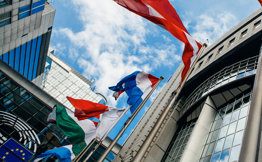Across Europe, policy makers are rightly focused on building deeper, liquid and more competitive capital markets that can channel investment to companies and unlock new opportunities for savers and investors. The push toward greater market integration under the EU’s ambition to create a true Savings and Investment Union is part of this effort.
But there is a less visible part of the system that is quietly undermining these goals: the post-trade infrastructure that underpins how securities are settled and safeguarded. While it may seem like plumbing, its costs and efficiency have a direct impact on investor returns, companies’ cost of raising capital, and Europe’s overall competitiveness.
AFME’s latest report shines a light on a critical component of this infrastructure: the fees charged by Europe’s central securities depositories (CSDs). These entities are essential to the functioning of capital markets. By law, every security issued in Europe must be recorded in a CSD, and trades executed on a venue must be settled there. In other words, there is no way to access European capital markets without going through a CSD. It is therefore appropriate for CSDs to be closely scrutinized for the fees they charge their participants
Our analysis, conducted with The ValueExchange and 12 leading banks, shows that settlement and custody costs in European CSDs are significantly higher than in North America — on average, European settlement is 65% more expensive, while custody fees are up to 650% higher. As a thought experiment, if European markets applied North American pricing, participants could save close to €1 billion a year.
Interestingly, these costs are not just a reflection of market size or regulatory burden. European CSDs are, in fact, highly profitable businesses, often recording margins above 50%. Many also operate lucrative non-core businesses, such as tri-party collateral management. What our study shows is that there is little evidence that scale or vertical integration translates into lower costs for users and there is limited competitive pressure to drive down fees.
The consequences are clear: the current situation keeps costs high, erodes investor returns and makes Europe a less attractive place for both issuers and investors. This is directly at odds with the goals of the Savings and Investment Union.
The problem is compounded by complexity. Fee schedules are opaque, fragmented, and vary dramatically between CSDs, with invoices containing dozens or even hundreds of line items. This makes it nearly impossible for market participants to compare providers on a like-for-like basis. Transparency—mandated under the Central Securities Depositary Regulation (CSDR) —remains more aspiration than reality.
The study also highlights a major challenge: the lack of publicly available historical data which makes it nearly impossible to track how CSD costs and structures have evolved over time.
What should be done?
Europe needs to bring true competition into its post-trade environment. Policymakers should:
- Harmonise and standardise fee disclosures so participants can meaningfully compare costs across CSDs.
- Ensure transparency of charges by requiring clear, comparable, and itemised fee schedules.
- Scrutinise profitability and incentives to ensure that costs reflect genuine operational needs
- Remove barriers to competition, such as restrictions on freedom of issuance and the structural separation between “issuer” and “investor” CSDs.
These reforms are not about undermining the stability of Europe’s market infrastructure. On the contrary, a transparent, competitive, and efficient CSD sector is essential to building resilience, efficiency, and investor confidence.
Europe’s policy makers have rightly placed the Savings and Investment Union at the heart of the region’s growth and competitiveness agenda. But unless post-trade inefficiencies are addressed, the vision of deep, attractive, and integrated markets will remain out of reach. Tackling high and opaque CSD fees is not a technical detail. It is a necessary step to ensure that Europe’s capital markets can truly compete on the global stage.






